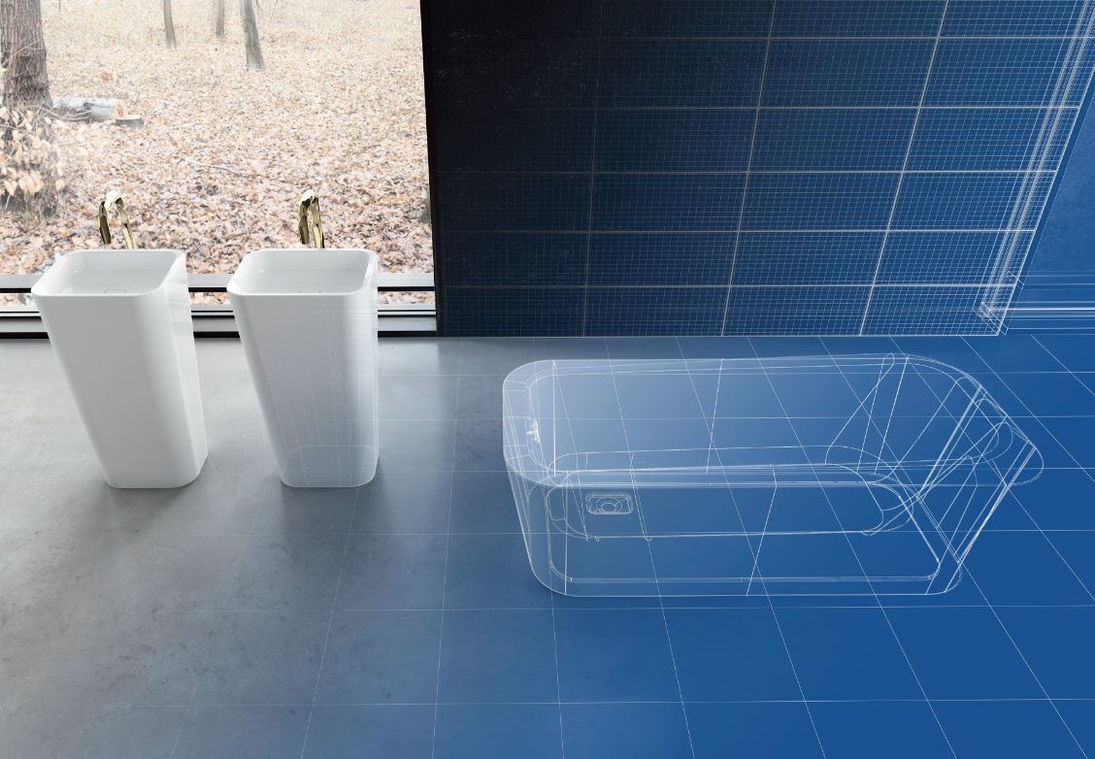The most advanced aspect of BIM is to find all the details on each product in a construction planning file: the 3D model describes each component with its properties, price and assembly. This also makes the organizational principle of "Just in Time" possible. Everyone involved knows exactly what is to happen when and where on the construction project. An example: If the architect increases the number of toilet rooms in his BIM designs, this results in planning changes with regard to the number of valves and accessories in the building. Accordingly, bills of materials, costs and delivery times change automatically for the installer.
But the most important architectural aspect against the background of planning security is that all elements such as walls, ceilings, dimensions, lettering and objects can be related to each other. The planner is able to identify the dependencies and effects of the individual elements of the building much more precisely: BIM shows how the planning of ventilation shafts, windows, staircases and heating systems influence each other and what consequences can be derived from this for statics and other trades. With the help of BIM, planners and architects can optimize and better schedule the calculation and installation of sanitary facilities. In recent years, many plumbing companies have digitally modeled their products with the help of IT specialists. For example, Oventrop, Kemper, Geberit and Viega provide BIM-compatible data for their drinking water systems.
Checking potential hazards in advance
The planner links the data of all trades with a neutral data interface - the digital basis for calculating all processes, the effects of the trades on each other, time planning, discharge quantities and energy consumption before and during the commissioning of the building. For these complex relationships, it is important that manufacturers of sanitary products provide detailed and binding data, such as discharge volume and water consumption. Kaldewei and Ideal Standard, for example, provide these parameters for their bathroom valves in various file formats. Marc Nagel from Ideal Standard explains: "This enables architects to simulate processes before the construction phase and check potential hazards. For architects, planners and engineers, our project consultants are also available for international BIM projects". Keuco, for example, has been supplying BIM-compatible data online for valves and accessories since 2016, and Kaldewei has also been supplying data online for its bathtubs, washbasins and showers. "In the long term, BIM will play an increasingly important role in project planning, coordination and cost control in construction. Especially against the background of the green building concept and increasing demands on the sustainability of buildings, the holistic approach of BIM is becoming increasingly important, as the method provides relevant information about the entire life cycle and energy efficiency of a building," adds Marcus Möllers of Kaldewei.
Hydraulic systematics requires detailed planning
With regard to drinking water hygiene in a building, further details need to be considered, such as the selection of safe materials for all water-bearing components or the avoidance of stagnation effects in the often very complex piping systems. The focus here is particularly on objects with changing or uneven load factors. In clinics, nursing homes, hotels or schools, periods of non-use of at least parts of the sanitary installation must be expected. Then the so-called intended operation is no longer guaranteed - stagnation and associated germs are pre-programmed. With modern pipe network calculation software, however, it is possible to plan drinking water installations in such a way that water change measures are automatically initiated if natural use is lacking or restricted. "From a perspective, BIM planning will even be able to predict the operating costs of a building over its entire life cycle. Necessary expenses for maintaining the intended operation will then be included in the calculation. Solutions with ring installations and flow dividers are characterised by low flushing volumes and are therefore considered to be particularly ecological and sustainable," explains Stefan Pohl from Kemper.
Leading manufacturers of the Blue Responsibility initiative, such as Geberit, Honeywell and Kemper, have a firm focus on ensuring sustainable drinking water hygiene. The members of the initiative support the further implementation of BIM for the comfortable and hygienically safe implementation of comprehensive building planning.
BIM offers opportunity for a more sustainable value chain
"Thorough planning with BIM-compatible programs will enable planning conflicts to be identified and resolved much earlier in the future. In this way, the coordination and workload can be optimized compared to conventional building planning. This also makes the value chain more sustainable," sums up Wolfgang Burchard, spokesman for Blue Responsibility. "Installers, specialist planners and architects can rely on the fact that German sanitary manufacturers are the most reliable partners for future projects, especially when it comes to drinking water safety".
Source of picture: Franz Kaldewei GmbH & Co. KG
